Turns out people don’t like squad rotation. Not when you call it that anyway.
Test Match Special can be a good place to gauge which way the wind’s blowing – and not just because it’s regularly interrupted by the shipping forecast.
Earlier this week, Jonathan Agnew wrote a column in which he voiced some common complaints about the way England have been managing their players this winter. He then inadvertently highlighted the challenge – no, impossibility – of satisfactorily operating a squad rotation system.
According to Agnew, Dom Bess has been badly handled – and it is certainly hard to argue that recalling a young player immediately after dropping him and denting his confidence was the ideal way to go about things.
The fact that Bess ended up being treated this way was because Moeen Ali headed home for a scheduled break, exactly one match after being promoted back into the first XI. England had tried to persuade him to stay when they realised what was unfolding, but Moeen knows the value of rest as well as anyone.
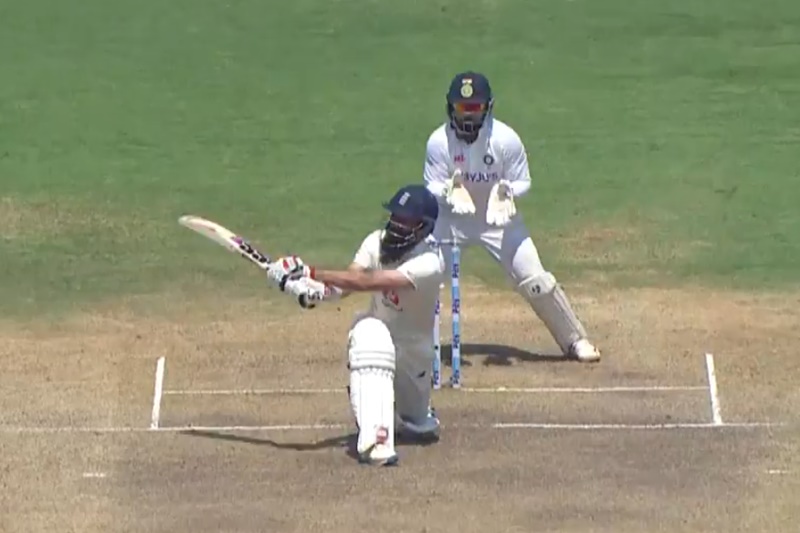
If we can just briefly flash back to 2019, the all-rounder lost his central contract despite having been the top wicket-taker in the world over the previous 12 months. It’s no coincidence that his performances waned in line with his enthusiasm during that period, having been a key player in all three formats for several years leading up to that.
Back to this winter just gone and Agnew says that England made, “errors that were far from rocket science,” with regards to squad rotation. He argues that the Bess/Moeen situation was one of these.
“It is clear that if England knew the plan for Moeen was for him to leave after the second Test, then their request for him to stay should have come before they picked him. If Moeen was always going to leave – which he was perfectly within his rights to do – then Bess should not have been dropped, because England were always likely to need him again.”
So basically Agnew’s solution was to threaten Moeen: ‘If you don’t give up your leave, you won’t play the next Test.’
We’d argue that if your simple, straightforward man-management ideas result in you accidentally making threats to a player, you probably haven’t got it right either.
This is why squad rotation is impossible. When you are making compromises in an uncompromising world, sooner or later they will be shown up. At some point or other you can count on being criticised for deliberately weakening your team.
Why is squad rotation necessary?
Agnew also made sure to touch on that related hot button topic for England fans, the Indian Premier League.
The IPL is a bit of a lightning rod for squad rotation griping. A lot of England fans are angry with it because with England players’ workloads currently unsustainable, it is the competition they personally care about the least.
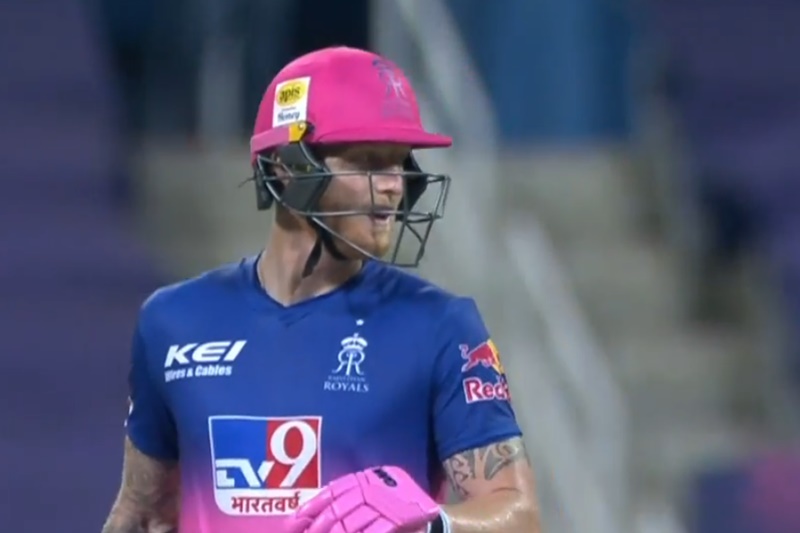
Maybe, if all else were equal, it would be low priority for England players too. But things are very much not equal. If a cricketer – let’s say one who has no Test contract with England – has an opportunity to double his annual earnings with a few weeks of short format cricket, that might well be something he wouldn’t want to miss out on.
It’s certainly tough to see players turning out for franchises after skipping England games – but really this is just getting lost in the detail. Raging at the IPL is like losing your temper at the car in front of you in a traffic jam. It’s a contributory factor, sure, but the problem is the whole environment.
In traffic jam terms, this means everyone driving everywhere and huge proportions of public roads surrendered to the storage of what is, at the end of the day, private property. In cricket, it means the tremendous volume of matches and the insane proportion of them that purport to be ‘top level’ cricket.
The IPL hasn’t created a massive fixture overload in 2021. All that is really happening is that England fans are noticing the massive fixture overload for the first time because England are struggling to cope with it.
Why is 2021 different?
It’s not really a coronavirus thing. This year was always over-full. We clocked it way back in 2018.
A year that ends with the Ashes also has a World T20 immediately before it. Those two appointments alone would be a tough ask, even without two big Test series against India earlier in the year.
But even that doesn’t really get to the nub of the problem. The nub of the problem is that THERE’S A WHOLE BUNCH OF OTHER STUFF ON TOP OF THAT.
England’s men’s team will play 19 international matches this summer, seven of which are potentially five days long. In what other sport would that happen?
That is just a normal summer for England. In 2019, they played 23 games – 11 of which were in the World Cup. In 2020, they somehow managed to play 18 matches in the middle of a pandemic.
It has been like this for a long, long time and it has never been manageable. All that’s really changed is the way it’s being dealt with.
The old way
Jimmy Anderson – perhaps England’s greatest ever quick bowler – hasn’t played a white ball game for his country since 2015. Stuart Broad – who is also pretty handy with the ball – hasn’t played a one-dayer since 2016.
It has suited everybody for these players to become Test specialists.
And it’s not just them. Joe Root is pretty handy in all formats, but as Test captain even he is finding himself slightly phased out when it comes to the white ball game.
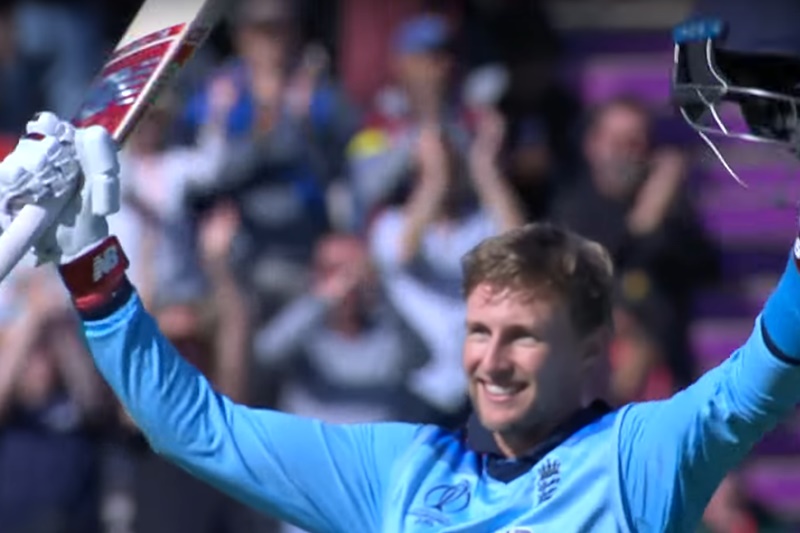
You could of course argue that neither Anderson nor Broad ever really excelled in the shorter formats, but how many England Test bowlers have? When workloads span formats, something tends to give.
Graeme Swann has said that he never really cared about bilateral one-day series and you can bet that something similar holds for a lot of England Test players. Those kinds of matches can come to feel like exhausting obligations if you’ve already competed in a Test series – particularly when you know that most of the UK public perceive the longer format to be a bigger deal.
After-the-Lord-Mayor’s-Show-itis means that England have a long history of letting their best all-format players sit out one-day games, or even whole tours. The threshold for exercising caution over a niggle was always a good deal lower for ODIs. This is partly how the format came to be a testing ground for young or promising players.
These fringe players may not have been as good as the established names they replaced, but at least they could be counted on to be fresh and excited at the prospect of playing for England.
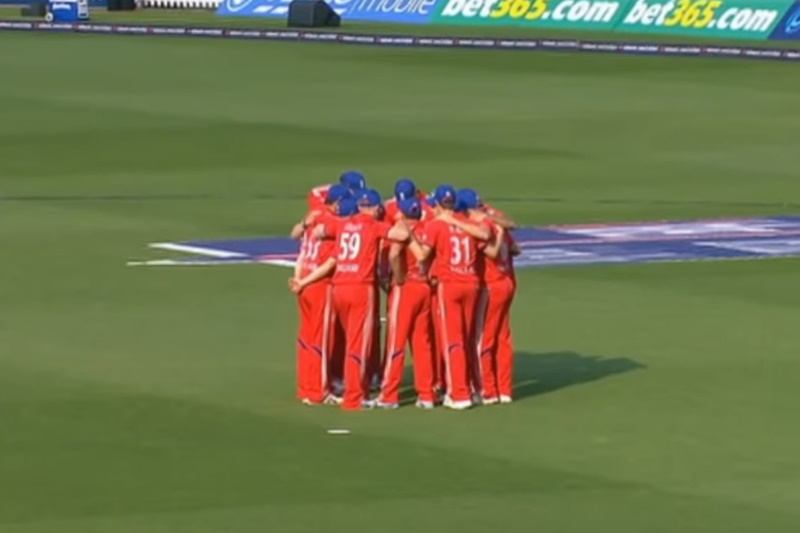
And in many ways it was a useful way of operating. Test success stories like Andrew Strauss, Matt Prior, Stuart Broad and James Anderson all made their England debuts in the 50-over format.
Plenty of one-day specialists were given a handful of pyjama caps too, without ever really being fully invested in as serious prospects. The 50-over side was never a B-team exactly. But it was very rarely a first team.
That relationship between the formats changed in 2015 when new director of cricket Andrew Strauss surveyed the wreckage of another failed World Cup campaign, looked ahead to the 2019 tournament in England and decided something had to be done.
2015 onwards
Strauss overhauled England’s central contract structure in a bid to redress the balance between white-ball and red-ball cricket and then England also began encouraging players to go and get experience in the IPL, the Big Bash League and other competitions.
A by-product of the limited overs squads being given equal weight to the Test squad was that the latter was effectively diminished. This was because many wannabe Test players were almost inadvertently being annexed by England’s limited-overs teams.
No player ever really says that they are surrendering their Test ambitions. It is just something that happens by stealth as the player in question pursues the path of least resistance. They miss County Championship matches to hone their skills at the IPL, then they miss more first-class matches because they’re busy playing white ball cricket for England.
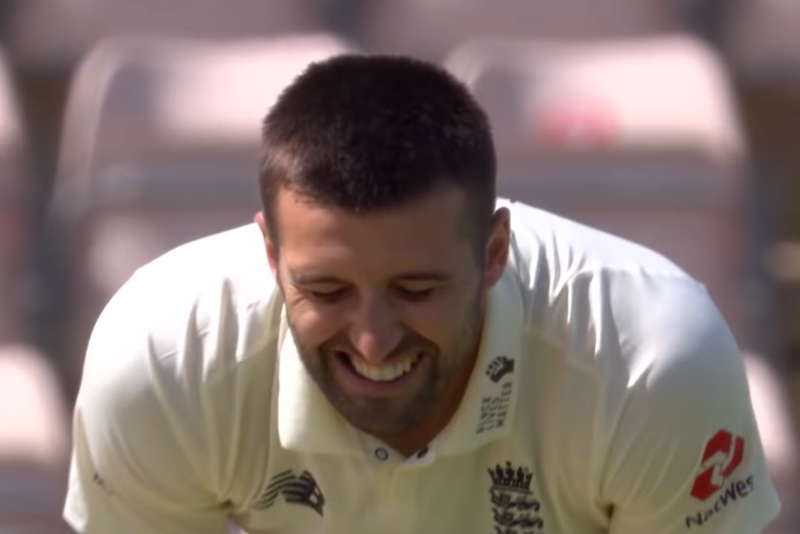
Mark Wood is one player who has struggled to square the circle, but most of England’s best players find they can’t easily split themselves three ways. How many are first-choice picks in all three formats at the minute? Ben Stokes certainly, Jos Buttler kinda – that’s about it. That minuscule overlap is only partly explained by differing demands and requirements.
If you made it into the England one-day team during the period leading up to the 2019 World Cup, that became your main job and opportunities to play other formats diminished.
It worked.
England didn’t just win the World Cup, they did so having already become the best 50-over side in the world – a side sufficiently great that they gave us an opportunity to deploy our all-time favourite description of the dismantling of a bowling attack.
But all of that’s over now… right?
Look at England’s Test results between 2015 and 2019 and it’s clear that they really muddled through.
All out for 58. All out for 77. They were at best a middling side, which is why they’re currently ranked fourth in the world.
But is that likely to change? We now have a situation where England’s white ball teams are (a) 50-over world champions, and (b) objectively better than the Test team.
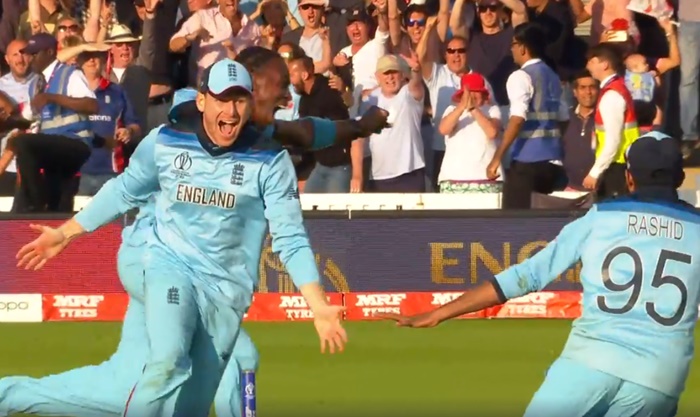
There is a World T20 coming up this year, then another World T20 next year and then it’s the 50-over World Cup again. Whisper it, but maybe Eoin Morgan and others don’t particularly want their best players side-tracked by the longest format.
Because the simple truth is there is no real way of successfully concentrating on both red and white ball cricket without taking time off somewhere or other.
Who needs a rest?
India and Australia play a hell of a lot too. But England play most of all.
In the last 10 years, these are the only three teams to have played over 100 Test matches. India have played 102, Australia have played 104.
England have played 126.
That’s quite a difference and India having played 42 limited overs matches more than England during that period doesn’t really make up the difference given how long your average Test match is.
It’s not like those teams are sashaying along untroubled by fixture bloat anyway. India players are regularly rested for series, while in 2017 Australia found themselves in the position of having their T20 side playing Sri Lanka at home while the Test team was in India. Good luck putting out your first-choice XI in that scenario.
And this is why England are no longer a team. They are two.
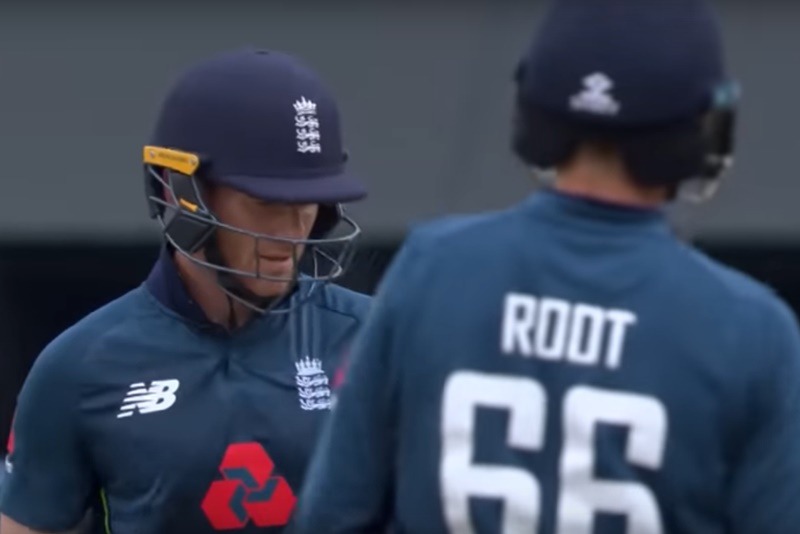
Think of the recurring arguments about the supposed ‘priorities’ of the likes of Jos Buttler, Jonny Bairstow, Jofra Archer, Adil Rashid or any number of others. These are players with the potential to represent England successfully in Tests whose efforts to improve in red ball cricket are to some degree compromised by playing for England.
The reverse applies to Joe Root who hasn’t played a T20 international since May 2019 and who now barely plays the format at all at any level. James Anderson and Stuart Broad, meanwhile, have long since accepted their lot.
All of these players are specialists borne of circumstance. Rotation is being explicitly spoken about as a policy in 2021, but all of these players have been de facto rotated out of rival England squads in recent years in a bid to keep them performing in their ‘main’ format.
There is only one way to ensure that England always field their strongest side and that is to play fewer matches. Perhaps the very obvious public distaste for squad rotation might finally get the message across.
We only have time do these features thanks to those of you who are chipping in via Patreon. If you’d like to support the site by flipping us a shiny coin or buying us a pint each month, you can do so here. It’s a big help. Thanks.
You may also want to sign up to get our articles emailed to you.





I think the new thing this year (aside from the compressed schedule and just casually chucking a series against New Zealand into the year for no real reason) is that the rotation has impacted Tests, and England fans value Tests above all else.
As to the number of games played vs other sports – baseball is the example that springs to mind, they play 150+ days a year, and have built rotation of pitchers (who already have a lighter workload than bowlers at an equivalent level) into the sport. Basketball teams also seem to play an inordinate number of games, I’m not sure how much rotation there is between games, but they have a lot of substitutions (as does Baseball, in it’s own idiosyncratic way), and cricket seems deeply unwilling to introduce substitutions into the game, for understandable reasons relating to the impact on the importance of winning the toss, etc.
Personally, I’d reduce the number of T20 internationals by around 50%, reduce ODIs even more aggressively than that in years following a World Cup (but allow them to ramp up again in other years), and make every Test series either 3 or 5 Tests.
I haven’t really thought through all the implications of this though.
Oh, and I’d get rid of the flipping Hundred, as well, of course…
Rotation is a big thing in US sports, almost all of which long ago decided that fans wanted a volume of fixtures over a first-choice team v first-choice team arrangement. International cricket – played between nations – has always been billed as more like the latter.
“In what other sport would that happen?”
I was going to ask if cricket is one sport or three these days, but that’s a bit trite. Still it’s certainly worth asking “in what other team sports do the top teams play in three different formats?” because I think that has to be a big part of the answer.
Rugby 7s play an awful lot of – admittedly, short – international matches per year but there’s pretty much no cross-over with the international 15s and not even a lot with domestic high-level 15s. In contrast I don’t think nines have taken off so much in league – in fact there are both sevens and nines as well as thirteens, making league the only other major three-format team sport I can think of, but thirteens is so dominant that the situation isn’t comparable to cricket.
When T20 started to get established as a serious commercial proposition I rather naively expected the fifty-over game to decline to make way for it, partly due to calendar congestion but also because I thought the two most similar formats would otherwise cannibalise each other. At the very least I expected ODI bilateral series to shrink rapidly in length. Maybe in other countries fifty overs is on the decline and I’ve myopically missed it because England have lately rediscovered its importance. We no longer get bombarded with news of an endless procession of ODI series played in such unlikely neutral venues as Singapore, Toronto and even Morocco – presumably this is the kind of venture that has been displaced by T20 as cricket’s cash cow for Asian countries in particular.
Clearly three formats doesn’t alone explain why England has ended up with a busier calendar than other countries that also play all three. Is the ECB more reliant on money from fielding teams in the international game than other “wealthy” boards, particularly because they have an unusually big domestic system (counties but also the amateur levels below) that needs financial support? Or do other boards simply care less about cramming in fixtures against all available opposition now the cricketing world has got a bit bigger? India seldom being politically able to play Pakistan does knock one opponent off their regular schedule.
Road cycling has a big mess of one-day races, week-long stage races and Grand Tours (which are three weeks long) – plus a number of riders also compete on the track or in cyclo-cross or mountain biking.
Riders tend to try and peak for whichever races suit them best and will either rest or work in a support role the rest of the time.
Also, cycling is very much not the direction to look to try and work out how things should be done.
Ohh yes, cycling is a good example of a multi-format team sport. Forgotten entirely about that. I did specify team because you could make arguments about tennis (singles/doubles/mixed doubles plus the different surfaces), athletics (indoor/outdoor) and probably a few more individualistic sports, but cycling definitely revolves around teams and the top cyclists do often turn their hand (feet?) to more than one format.
I feel like par of it is that England’s home cricket season happens at a time of year where the only other Test nation playing at home is Ireland (and maybe the West Indies?) – because for everyone else it’s either winter or the wet season. So we never have a shortage of sides wanting to tour us, but most other teams have this June-August gap built into their schedules (unless, of course, they’re touring England that year. Or going to Cairns or Darwin maybe). There’s really no solution to that unfortunately.
Can we actually make you King of Cricket KC?
I can normally squeeze in these articles in between zooms, but today’s needs proper attention. Must be close to your world record word count?
Also, Anderson had a pretty decent ODI record didn’t he?
It’s definitely one of the longer ones we’ve done on this site, but there’s a handful in this ballpark.
Zero chance of it without the Patreon though. These things take a while.
269 wickets at 29.22 with 2 five-wicket hauls and a hattrick. He’s still England’s leading wicket-taker in the format.
Also, I know four-wicket-hauls-and-above aren’t really a thing, but Jimmy Anderson got 13, which is another England record. Only 9 bowlers in world ODI history have more.
Root as well of course. More ODI hundreds than any other Englishman, a higher average than all bar Jonathan Trott (of all people), a higher strike rate than Kevin Pietersen and the fastest Englishman to 3,000, 4,000, 5,000 and, assuming he scores at least 38 runs in his next 45 innings, the fastest (and only second ever) to 6,000 runs too.
He also has a higher T20I average than all current England players except Dawid Malan, and is behind only him and Kevin Pietersen in the all-time list.
If he does go the way of Anderson, that will be two members of England’s probable all-time best ODI XI who have essentially been barred from the team due to the amount of matches played.
Very good, But please, It can’t be that hard for the team managers in England. They are just over complicating everything. Go back to basics and be sensible about everything and thing like a normal person.
What are the “basics”? I’m not sure there’s consensus on that one. The very traditional “basics” would be “just play your very best team in international cricket” but can they really do that now without breaking their top players, even if they slashed the fixture list?
Then the second-most-traditional view might be “Test cricket is supposed to be the ultimate test of your top players, so play your best team in that, and let some of your developing players have a bash at the hit-and-giggle formats”. But Test cricket isn’t the undisputed King of the Hill any longer, and several Test-playing nations are very upfront about it not being their main form of the game, not least because it is the least commercially viable version for them. In England it’s still got a certain prestige but it isn’t where most of the money is made and, Ashes aside, doesn’t have the same cut-through to the general public as winning the 50-over World Cup did – a format that many pundits had suggested was moribund.
So picking priorities is a balancing act and I’m not sure it has an obvious or basic “correct” answer. As His Maj points out, England’s World Cup win partly came because Strauss had chosen to shift the set-up around that priority. If instead some other Big Boss had come in and said “we’ll get back to basics – Test cricket is the highest form of the game so we’ll focus on that, we’ll also spend more effort on T20 because it’s the future and where the money’s made, but we are going to deprioritise ODIs and play a lot fewer of them to relieve pressure on multi-format players” that would also have been a logical, sensible and coherent plan, just with a very different likely outcome.
I say “traditional” but probably mean “traditionalist” and certainly not “historical”. The way the earliest international matches worked didn’t really follow the notion of “the best against the best”, particularly as far as captaincy was concerned, and in the ultimate example of squad rotation, it wasn’t even unknown for England to field two completely disjoint “Test” teams simultaneously across two different continents. Perhaps that’s the kind of “basics” we will end up going back to, with a separate long-form and short-form squad (can’t imagine two long-form ones!) that won’t necessarily be touring the same country together.
It seems to me that the biggest problem with the Ali/Bess situation was Moeen catching Covid. Had Mo been available for the whole Sri Lanka tour it appears that he would have played the first test. If Mo played the first test then he either performs well and keeps his place until he goes home at which point Bess comes in either for the third test or England still only go with one spinner and Bess comes in for the fourth test. In any event he would come into the team without the drama around being dropped.
The other possibility is that Mo plays the first test in Sri Lanka but that at some point between then and going home he is dropped for Bess on performance grounds anyway. I think that there’s a very strong argument for Mo’s second innings 40 odd being heavily influenced by the knowledge that he was heading home to see his family at the end of the match, a last day of school vibe if you will. If he knows he still has two matches left I think his mindset is very different.
The other major rotation issue was Bairstow missing the first two India tests. After the first test a lot of people said that the issue was that Bairstow had given up his place and he may not get it back after we had won, it was only due to the top order struggles that he came back in, had the top three all been scoring runs he presumably wouldn’t have regained his place. Due to Crawley’s injury I think its fair to say he would have played the first test if he had been there but short of a big hundred you suspect it would then have been between him and Burns as to who dropped out to let Crawley return once fit. Its certainly far from certain Bairstow would have played both of the tests he missed.
I think realistically there’s an argument that the only player likely to be rested from Test matches that is a key part of the team is Stokes, with arguably Moeen at such a level in the sub-continent and that was exacerbated by Covid in any event.
None of these are issues if you don’t play so many games that you need to rest players.
I don’t necessarily disagree with that but I think you have to acknowledge the effect of the Covid bubbles on touring. A lot of the explanation from England regarding the rotation policy this year has focused on the mental side of the current situation and “bubble fatigue”, its not the only factor certainly but it plays a role at the moment. If the England players could fly family out to see them and enjoy more time away from the hotel/cricket I suspect that their need for rest would reduce. Its like a mobile phone the battery will only last so long but it will drain even quicker with its screen on full brightness.
I think the point I am trying to make is how much of the changing was due to rotation and how much was due to England not knowing their strongest team? The principle of always fielding your strongest team is a good one but I can think of very few sides in history that have had an undisputed first choice team and even fewer where the team was obvious in all conditions. If everyone had been available for all 6 tests I’m not sure that the selection would have changed all that much, but rotation is a nice diversion for a lack of consistency in team selection.
The covid bubbles exacerbate things, but in that sense they are just a light shone on an existing problem.
Lots of people are saying the India tour didn’t work because of rotation. However, England had most of their best team available (they had players available that should’ve been picked but weren’t) and I think even if England had a full complement in the squad it wouldn’t have made any difference to the series result apart from England losing not quite so badly in the 3 defeats. The only mistake they did was the Moeen-Bess situation which affected the form of Bess (and potentially the result very slightly) but basically the reason India won the series was because they are better than England in Indian conditions. However, the basic principle or rotation works and they just need to avoid making basic mistakes in the future.
Also, I reckon England may put a ‘B-team’ on for the ODI series against Sri Lanka in the summer and possibly Pakistan as well. Anyone that is in the Test and T20 squads will be rested for the ODI’s. So basically Morgan and Rashid will be the only players playing in those ODI series that would be definite first team picks
It would be good to see similar teams that played against Pakistan when there were the overlapping fixtures (overlapping in terms of quarantining), with players that won games, even if they were ‘second choice’. The likes of Saqid Mahmood, Lewis Gregory, David Willey.
The selectors need to stop having a grudge against Alex Hales as well. He is on form and he is actually good, they need to get over their differences and pick him. Within the year before he was banned he was on the form of his life, Jason Roy, YJB and Hales at the top of the order did the job quite often and scored a large bulk of the runs and generally one, or two of them would be on form and the third would get out quickly preventing wasted time.
There are rumours that Liam Livingstone might get his next international outing.
I think it comes down to money and cricketing ego.
England now prioritise Limited Overs Cricket (LOC) over Tests probably because it massively helps the coffers, attracts attention to the Hundred, gives them a good shot at winning the next 3 LOC world tournaments, and they anyway have a captive audience for the home Test season, for which they still have a good side.
Indian cricket on the other hand has enough of moolah from the IPL and sundry other LOC. It’s Test respectability that we want, and are willing to spend time and money to achieve it.
Aus cricket is in balancing mode – Big Bash is up then down, their Test cricket doesn’t have any ego issues yet (unless Eng beat them later this year), ODI is downwards but that’s in keeping with trends.
The Rest of course are largely struggling, which is concerning; and the IPL is untouchable at this point.
It is telling that a place at the WTC final was prioritised, talked about and aspired for by the commonest of Indian cricket followers, while the average English follower seemed rather unmoved.
While traditionalists generally prefer Test cricket, I reckon a lot of traditionalists don’t think much of the idea of the WTC. Bit new-fangled, artificial. We don’t play Tests for “points”, a Test is worth winning simply because of its inherent value as a Test (or worth drawing if it’s the last in the series and a draw ensures you win the series). Similarly a lot of Test fans didn’t care about Test rankings systems before the WTC. I wouldn’t mistake (among fans at least) an apathy about WTC for an apathy about Test cricket in general.
Another worry for the test side is that outside the A team is the B team cupboard is a bit bare in the first place. What is England’s best opening pair? Or should that be the least bad one? Who’s the next cad off the rank of none of the incumbents are deemed good enough?
Also speaking of Jonathan Agnew, has anyone else noticed that he’s “interviewed“ for “his” column? I get it if it’s a player needing a ghost writer. But for someone who works for the BBC in the first place?
Also thanks for the piece. Excellent stuff KC.
It does seem super-weird for a journalist to be interviewed by another journalist for their column. But we suppose that for all that his post-playing career outstrips his playing career, Agnew is fundamentally a ‘former player’.
Great article.
And good to see cars’ domination of urban space included in a piece on cricket fixture scheduling. I’m involved in some local campaigning about cycling so might try the reverse.
Ha!
We nearly included a StreetView image of roadside parking but felt that was erring on the side of over-eggage.
No, that would have been good, along with a bit on pavement parking and cycle lanes blocked.
It’s a nightmare in Chorlton when there’s a bloody cricket match on.